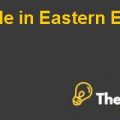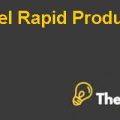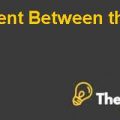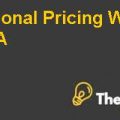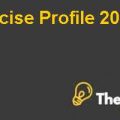
Background
The board of directors of Ocean Drilling Incorporation had received two bid offers on November, 16, 1981. The board of directors is faced with a choice to choose one of the two mutually exclusive bids. Both the bids have been received by two foreign shipyards, which are located in France and Japan. The company will also have to purchase the rigs for these bids and the major portion of the financing for the purchase of these rigs would be in these foreign currencies.
Therefore, the company would be exposed to the foreign exchange risks and risks associated with cross border valuations. The total bid price received by the company for the bid 1 was $ 96 million and for bid 2 it was $ 90 million. However, as the firm would have to finance the purchase of the rigs with 75% to 80% of the total cost of the rigs, therefore, a detailed analysis needs to be performed for both the bids before making a final decision based solely on the bid prices (Piper, 1981).
In order to perform the analysis for the bids, detailed present value analysis, loan analysis, and valuation of financial subsidies need to be performed. Furthermore, as mentioned earlier the company is exposed to significant foreign exchange risk therefore, the management will also have to consider a range of hedging instruments to hedge the position of the company in the face of the future exchange rate movements.
Assumptions/Inputs
Most of the information has been provided in the case study therefore, there are not many assumptions that have been made for this case. However, the key inputs for the detailed analysis that has been performed are listed below:
- It has been assumed that the start date for the loans either in the French currency or in the Japanese currency would be 16, November, 1981.
- The loan amortization schedule has been prepared based on a loan period of 8 years and 10 years for the French and the Japanese loan respectively.
- It has been assumed that there are no optional extra payments associated with the loans in the foreign countries.
- It has been assumed that the down payment would also occur in 1981 at the start of the loan date.
- Cost of debt of 20% has been used as the cost of capital to evaluate both the bids.
- It has also been assumed that the future exchange rates are going to appreciate or depreciate based on the past average growth rate of both the exchange rates against the dollars.
- The cost of capital of 20% can be more or less when converted in the foreign cost of capital for France and Japan respectively.
- For the money market hedging strategy, it has also been assumed that the company would invest the foreign currency loan amounts at 6 months interest rates, which are considered as the possible yield on government securities in France and Japan respectively.
Approach/Methodology/ Data Analysis
Before performing the valuation of both the bid options, the loan amortization schedules have been prepared for both the foreign loans by converting them to the equivalent US$ amount at the spot exchange rates. The spot exchange rate for French francs is FF 5.57/$ and the spot exchange rate for the Japanese yen is Y227.15/$. Based on this, the total loan amount has been calculated with the respective loan to value ratios of 75% and 80% for bid 1 and bid 2.
After creating the loan amortization schedule for both the loans, the analysis of both the bids has been performed based in the discounted cash flow methodology. This methodology has been used as it incorporates the concept of time value of money since the maturity period for the loans is different and the rigs are also going to be depreciated on a straight line basis for a period of 5 years. Furthermore, the projections for the company’s future earnings have also been provided in exhibit 3 for the next 5 years starting from 1981 and ending in 1985.
Analysis of Bids
First of all, if we see the valuation of bid 1 in the excel spreadsheet then it could be seen that the operating income for the next five years has been taken and depreciation of the rigs has been deducted. The tax rate has been provided, which is 50% and based on this the after tax operating income which is basically called as the net operating income after tax (NOPAT) has been calculated for the company..............
This is just a sample partial case solution. Please place the order on the website to order your own originally done case solution.


